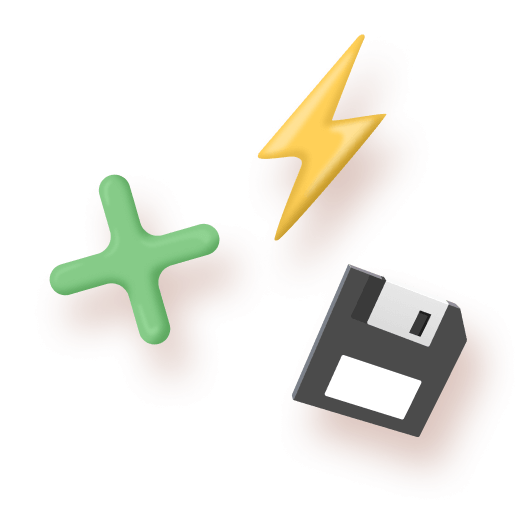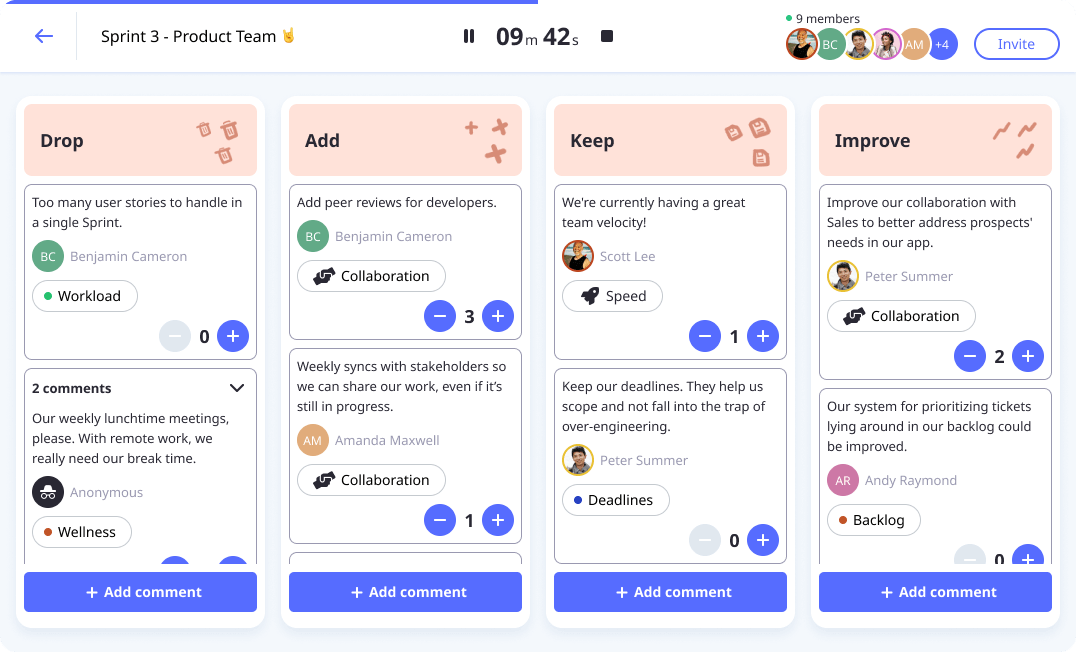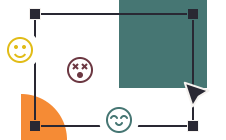The DAKI Retrospective Template


What is the DAKI retrospective format?
DAKI is a playful and super intuitive retrospective template. Its name is an acronym for Drop, Add, Keep, Improve.
This retrospective format helps you identify your team's activities and attitudes. To do so, team members share things they feel should be dropped, added, kept, or improved.
One core rule to follow here is that everyone considers the team's continuous improvement as their prime objective.
A specificity of the DAKI retrospective technique is that participants will notice their difference in perceived value for a specific item. For example, a team activity considered necessary and, therefore, simply to be kept (Keep) for Leah can very well be seen as something that should instead be improved (Improve) for Rick.
Based on this difference in perceived value, DAKI stands out as a solid team discussion generator.
Once the inventory of activities and attitudes is completed, the team builds its own action plan. This action plan allows the team to improve on one or more specific point(s) quickly, ideally by the next retrospective.
Thus, the future of the team (materialized by the action plan) is directly determined by its members. Retrospectives always go hand in hand with democracy, you know! 🗳️
The 4 elements of the DAKI template




Why & when should you use the DAKI retrospective template?
DAKI is primarily built to focus on improvement after several Sprints working with the same team. However, if you don't work with Sprints, there's no need to worry. You can use DAKI to improve the quality of your projects as well.
This activity excels at finding areas for improvement based on the value perceived by each individual, where another activity would simply list out facts.
DAKI is also an excellent way to find good team practices to maintain while pointing out bad habits that should be gotten rid of.
Finally, DAKI will absolutely do the trick for a mid-project status (or project post-mortem). An event retrospective would also work well with DAKI. A self-reflection exercise, practical for taking stock of your own productivity and goals, can also be conducted using this technique.




